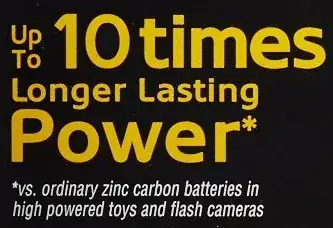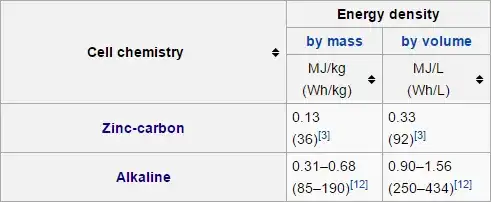Not really. The trick they use is to compare to zinc-carbon batteries, which as Sklivvz points out in their answer are approaching 10x worse. Higher discharge currents magnify the effect, but it also very much depends on the device as some can work with lower voltages than others.
However, in general the claim that is often made on TV, without the caveat about only comparing to zinc carbon that Duracell are significantly better than other brands is untrue. For example, compare these datasheets from Duracell and Panasonic:
http://professional.duracell.com/downloads//datasheets/product/Simply/Simply_AA_MN1500.pdf
https://na.industrial.panasonic.com/sites/default/pidsa/files/1.5vseries_datasheets_merged.pdf
(the equivalent Panasonic cell is the LR6XWA)
Note the discharge curves at various loads are almost identical. Duracell has no advantage at all, and in fact performs slightly worse under heavy load. The other issue is quality, and Panasonic are popular with industrial applications due to their high reliability and consistency, where as Duracell are more of a consumer oriented brand.
Unfortunately I was unable to find a datasheet for IKEA or another cheap brand of alkaline cell, but but in informal tests (http://www.batteryshowdown.com/static/images/mah_large_200mA.png) they tend to perform similarly to Duracell's most expensive cells at a small fraction of the cost, sometimes as little as 1/10th the retail price.
In short, Duracell's claims seem to be from a time when alkaline cells were new and much more expensive than zinc, but nowadays are simply misleading due to alkaline cells being barely more expensive (5-10%) and what consumers are likely comparing against.


